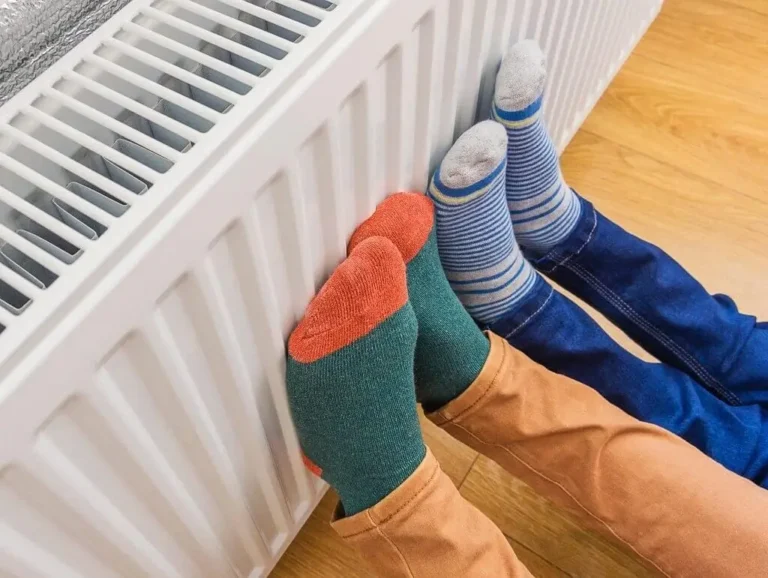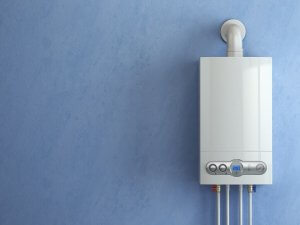WALL INSULATION GRANT GUIDE
In this article, Buildings and Trust will explain what you need to know about the different types of wall insulation and wall insulation grants in the UK.
This article will explain in detail the benefits of a wall insulation grant for your home. You will learn about the two different types of wall structures: a cavity wall and a solid external wall structure. You will be told about the kinds of insulations suited to each type of wall structure. Finally, the article will explain the advantages to the environment and to your finances of getting a wall insulation grant.
Cavity Wall Insulation (CWI)
WHAT IS A CAVITY WALL?
Most importantly, a cavity wall is a wall with an outside ‘skin’ of bricks, an inside skin of blocks, and a cavity in between the two. Wall ties hold together with wall ties.
WHAT IS CAVITY WALL INSULATION OR (CWI)?
In contrast, today, most houses built after the 1920s will probably not have insulation in their cavity. Consequently, it was only towards the end of the 1900s those bricklayers placed insulation inside the cavity. This provided the house with greater heat efficiency. Moreover, this would make the home more energy-efficient. Finally, this would lead to a reduction in fuel bills.
HOW MUCH HEAT AM I LOSING FROM MY HOME?
On the other hand, if your home does not have insulation in the cavity, you could be losing up to a third of the heating from your home. When the cavity wall insulation is installed, you could literally save hundreds of pounds a year.
In addition, the extra heat trapped inside the home will lead to greater thermal comfort for the occupants. This will definitely keep your home toasty warm!
WILL CAVITY WALL INSULATION (CWI) HELP TO BENEFIT THE ENVIRONMENT?
For this reason, by reducing the need for standard methods of heating up the home, you will be helping to benefit the environment. There will be a reduction in fossil fuels. In conclusion, this will lower your carbon footprint.
HOW CAN I TELL IF MY WALL HAS A CAVITY?
Notably, a cavity wall will have all the bricks following the same pattern. Furthermore, they will be all overlapping the bricks below. This is why the cavity wall is sometimes known as a ‘half- bond’ wall. See image.
WALL INSULATION GRANT GUIDE
WHAT CAVITY WALL INSULATION WILL DO FOR YOU
Please take some time to read what benefits cavity wall insulation will do for you.
Firstly, cavity wall insulation (CWI) will keep your home toasty warm!
Thirdly, cavity wall insulation (CWI) will add value to your home. Your home will be more energy-efficient!
Secondly, (CWI) will save on energy costs and keep the cat warm!
Finally, the walls won’t feel the cold anymore!
FIRSTLY, BUILDINGS AND TRUST WILL CONNECT YOU WITH DEPENDABLE, ACCREDITED AND REGISTERED INSTALLERS
Therefore, you can rest assured, Buildings and Trust will be connecting you with the best energy-efficient installation. Furthermore, you will be contributing to a cleaner environment!
SECONDLY, BUILDINGS AND TRUST WILL CONNECT YOU WITH COST-EFFECTIVE REGISTERED INSTALLERS
With the result, Buildings and Trust will advise you how to get your property energy efficient. Most importantly, you will save on those energy bills!
FINALLY, YOU DECIDE
In conclusion, you decide when you require the cavity wall installation to be installed. In addition, you will be keeping your home toasty warm! To sum up, it's a 'win, win' event!
DO I ALREADY HAVE CAVITY WALL INSULATION?
WALL INSULATION GRANT GUIDE
WHAT CAN I DO TO FIND OUT IF THERE IS ANY INSULATION IN THE CAVITY?
Firstly, you could find out the age of your home. As previously stated, if bricklayers built after the 1920s and before 2000, the chances are it won’t have insulation in the cavity.
HOW WILL I KNOW WHETHER MY WALL INSULATION IN IT?
Also, you could look very carefully around the external part of the wall. If the insulation has been pumped into the wall, there will be some evidence of small holes in the wall placed at regular intervals.
Furthermore, if you have safe access to the attic, you could investigate whether any exposure to the wall at the top. If there is wall exposure, try to see if there is any insulation coming out of it.
WHO CAN I ASK ABOUT INSULATION IN MY WALL?
In the first place, you could contact the local council. For one thing, their building control department may have records of any insulation placed into the cavity of the wall.
WILL A ‘BORESCOPE INSPECTION’ TELL ME IF I HAVE INSULATION IN THE CAVITY?
Yes. To put it another way, you could contact a specialist to drill a small test hole in the wall. In particular, this will help to determine whether there is insulation in the cavity.
WALL INSULATION GRANT GUIDE
IS MY CAVITY WALL SUITABLE FOR CAVITY WALL INSULATION (CWI)?
To begin with, not all cavity walls suit CWI. To be on the safe side, read through these initial checks. Indeed, if they apply to your cavity wall, then your wall will probably benefit from CWI.
The wall and brickwork is in good condition. There are no cracks, holes, or crumbling of the wall.
To begin with, make sure there is no condensation or damp patches on your internal walls. Secondly, if there is, you should not have CWI yet. You must get the condensation problem sorted out first. Driving rain from the outside has bridged the cavity and is now soaking into the internal skin of blocks. In conclusion, adding CWI will only exacerbate the problem.
In the first place, installers should be able to have access to the wall(s). Moreover, if there are obstacles or part of the wall is in a neighbour’s property, and the neighbours don’t give consent for installers to be on their land, this could be a problem.
In general, the cavity should be at least 50mm or 2 inches wide. Consequently, if it is less than this, the wall would not be suitable for CWI.

Firstly, (CWI) will bring a welcome warmth to your home!
Most importantly, cavity wall insulation (CWI) will bring a welcome warmth to your home!

Secondly, (CWI) will make a warmer home
In addition, cavity wall insulation (CWI) will keep you toasty warm!

Thirdly, (CWI) will give toasty warm satisfaction
Furthermore, those cold winters will be a thing of the past!
EXTERNAL WALL INSULATION (EWI)
WALL INSULATION GRANT GUIDE
WHAT IS EXTERNAL WALL INSULATION (EWI)?
(EWI) is mostly used on solid brick, block, or stone walls. Installers employ it to improve both the energy performance of a home and to improve the aesthetic quality of the exterior.
In contrast to today, homes built before the 1920’s were generally built with solid brick. The building industry now makes homes with more energy-efficient cavity walls. These are Cavity Wall Insulations (CWI) because they have insulation placed in the cavity. This insulation greatly reduces the heat lost from modern homes. Not only that, it lowers those all-important energy bills.
AM I LOSING A LOT OF HEAT WITHOUT INSULATION ON MY WALLS?
Yes is the short answer to that. A home without external wall insulation can be losing upwards of 25%! In other words, without insulation, you could literally be paying hundreds a pounds a year in extra heating!
WILL (EWI) HELP TO TACKLE MOISTURE AND CONDENSATION?
There are many factors that can cause condensation and moisture in a building. Moisture can come from cooking, heating, washing, bathing, showering and many other consequences of human activity. These are all internally produced. In other words, the moisture is coming from inside the home.
Also, you can have moisture coming from below the home. You would commonly call this ‘rising damp.’
External walls can also have rain and moisture soaking through them. This will also cause condensation and mould inside the home.
External Wall Insulation (EWI) will not help with internal condensation or rising damp, but it can help enormously with externally caused dampness. It will provide a much-needed seal to the external walls. This will make them weather resistant!
HOW WILL EXTERNAL WALL INSULATION (EWI) HELP ME TO BENEFIT THE ENVIRONMENT?
For this reason, by reducing the need for standard methods of heating up the home, you will be helping to benefit the environment. There will be a reduction in fossil fuels. In conclusion, this will lower your carbon footprint.
EXTERNAL WALL INSULATION (EWI)
WALL INSULATION GRANT GUIDE
HOW IS EXTERNAL WALL INSULATION INSTALLED?
External Wall Insulation (EWI) is a series of insulated boards fixed to the outside wall of your home. The insulation boards help to stop the heat from your home escaping to the outside.
Once the installer has fitted the thermally insulated boards in place, the installer will apply a render coat. This render coat helps to stop the weather getting to the boards. The wall is now weather resistant!
There are three stages to the application of External Wall Insulation (EWI):
- Preparation and board fixing
- A fixing mesh and weather-proof base coat
- A final decorative and weather-proof finish
WILL EXTERNAL WALL INSULATION (EWI) IMPROVE THE LOOK OF MY HOME?
Certainly, it will improve the exterior look of your home! Your house will be the envy of all the town when complete!
You can have a variety of finishes to choose from. These finishes can blend beautifully with the surrounding features of your home.
WILL EXTERNAL WALL INSULATION (EWI) ADD VALUE TO MY HOME?
Indeed, once the installation of the External Wall Insulation (EWI) is complete, your home will have increased in value considerably! What were once shoddy, dirty, and crumbling walls, will transform into beautiful exterior walls. Would-be buyers will be flocking to buy!
WALL INSULATION GRANTS
WALL INSULATION GRANT GUIDE
WHAT ARE THE DIFFERENT TYPES OF WALL INSULATION I CAN GET WITH A WALL INSULATION GRANT?
There are various factors to consider when installing wall insulation. Your wall insulation installer will survey your home. The installer will then decide what type of wall insulation to apply to your home. They will determine whether you have a cavity wall or a solid external wall.
Furthermore, the wall insulation surveyor will need to determine the width of any cavity walls. They will also have to investigate the potential for moisture build-up in the wall. A Badly chosen insulation can be devastating where a wall is prone to condensation! Finally, you and the surveyor will consider which type of wall insulation is both suited to you and will benefit the environment best.
POLYURETHANE FORM (PUR) CAVITY WALL INSULATION
Polyurethane foam (PUR) cavity wall insulation is a favourite cavity wall insulation chosen by many households. The installation process is quite simple and quick to conclude. The installer drills many small holes through the wall cavity. The installer then inserts an application nozzle to fill the cavity with the polyurethane foam (PUR).
The foam easily enters the cavity wall. Once inside, the foam expands and fills the vacant cavity. The polyurethane foam fills all the crannies and cracks in the cavity wall.
Polyurethane foam (PUR) is very effective at preventing thermal bridging in a cavity wall. Thermal bridging happens when a hot spot can jump, via a material, to a cold spot. Heat travels from the cold to the hot. This is why your feet feel freezing when walking on cold tiles! The heat from your body is travelling from your hot feet to the cold tile!
Furthermore, once the polyurethane foam (PUR) is installed, it will not sag over time as some cavity wall insulations do.
Polyurethane foam (PUR) possesses some of the best insulating properties. Depending on the cavity width will determine the thermal efficiency of the polyurethane foam. The U-Value of polyurethane foam (PUR) is 0.22W/m2K for a 100mm cavity wall. The U-Value for polyurethane foam (PUR) is 0.33W/m2K for a 65mm cavity wall.
The general cost of polyurethane foam (PUR) is around £21 to £26 per m2. However, this cost can change in different parts of the UK.
WALL INSULATION GRANTS
WALL INSULATION GRANT GUIDE
GLASS WOOL CAVITY WALL INSULATION
Glass wool insulation emanates from thousands of very fine strands of glass. These thousand pieces of glass trap the air in thousands of tiny pockets of air. Air provides excellent thermal resistance properties.
The air pockets in the glass wool trap in the heat. As a consequence, heat cannot escape through the cavity wall. Glass wool possesses an R-Value ranging from 3 to 4 per 10 inches. This R-Value property of glass wool insulation provides excellent home thermal efficiency. Glass wool cavity wall insulation will certainly lower those all-important energy bills.
Furthermore, because glass is a sustainable material, the glass wool is completely recyclable. This helps to benefit the environment.
Another property of glass wool is that the glass is water resistant. Glass wool’s moisture resistance properties help to reduce the potential for condensation in your loft. Furthermore, another property of glass wool cavity wall insulation is that it is virtually fireproof.
A final property of glass wool cavity wall insulation is that it helps to reduce noise pollution from the outside. Glass wool cavity wall insulation creates a sound barrier in the form of an acoustic carpet. It helps to reduce all types of noise trespass such as traffic, industry, entertainment, construction etc.
An installer will drill small holes in the external wall to get inside the cavity. The installer will then use an application nozzle to blow the glass wool into the cavity. The installation process is relatively easy to conclude.
The general cost of glass wool cavity wall insulation is around £11 to £16 per m2. However, this cost can change in different parts of the UK.

EXPANDED POLYSTYRENE BEAD (EPS) CAVITY WALL INSULATION
Expanded Polystyrene Bead (EPS) cavity wall insulation is similar in thermal properties to glass wool cavity wall insulation. Expanded Polystyrene Bead (EPS) cavity wall insulation possesses a thermal U-Value of 0.02W/mK.
An installer will drill small holes in the external wall to get inside the cavity. The installer will then use an application nozzle to blow the Expanded Polystyrene Bead (EPS) into the cavity. The installation process is relatively easy to conclude.
The general cost of Expanded Polystyrene Bead (EPS) cavity wall insulation is around £11 to £16 per m2. However, this cost can change in different parts of the UK.
WALL INSULATION GRANTS
WALL INSULATION GRANT GUIDE
WHAT TYPE OF GRANT IS AVAILABLE FOR FREE WALL INSULATIONS?
What You Need to Know About the Home Heating Cost Reduction Obligation (HHCRO) Grant Scheme
Most importantly, the Home Heating Cost Reduction Obligation is the UK Government’s multi-million-pound initiative. It offers energy-efficient improvement grants to eligible homeowners.
Also, the Home Heating Cost Reduction Obligation Scheme can help low-income families and vulnerable households. It will provide them with new boilers, new loft insulation, and new wall insulation!
Furthermore, the Home Heating Cost Reduction Obligation HHCRO Grant Scheme is also known as ‘Affordable Warmth.’
In addition, the Home Heating Cost Reduction Obligation HHCRO Grant Scheme is part of the Government’s Energy Company Obligation (ECO) scheme. Consequently, the ECO schemes aim to make homes more energy-efficient. For instance, you can have:
- Storage heating replacement
- Broken Electric storage heaters installation
- First Time Central Heating (FTCH)
- LPG or Oil boiler replacement
- Broken gas or oil boiler installation
- Cavity wall insulation
- Underfloor insulation
- Loft insulation
- Room in roof insulation
- External wall insulation
Consequently, this will certainly improve human comfort in your home!
Benefits
Moreover, after the energy-efficient improvements, you will save money on energy bills!
Furthermore, you will benefit the environment!
WALL INSULATION GRANT GUIDE
WHO CAN APPLY FOR THE HOME HEATING COST REDUCTION OBLIGATION GRANT SCHEME (HHCRO)?
Most importantly, eligible homeowners can access the Home Heating Cost Reduction Obligation Scheme. You can claim grants worth thousands of pounds!
Finally, landlords can take the opportunity to apply !
HOW DOES THE SCHEME WORK?
Firstly, the Government’s Home Heating Cost Reduction Obligation HHCRO benefits homeowners.
Buildings and Trust are neither directly nor indirectly authorized to act on behalf of the local authority for that area advertised. However, Buildings and Trust will connect you with a registered installer for that local council.
Secondly, the Government pledges the cost of home improvement. This will make homes more energy-efficient.
WALL INSULATION GRANTS
WALL INSULATION GRANT GUIDE
WHO IS ELIGIBLE FOR THE HOME HEATING COST REDUCTION OBLIGATION GRANT SCHEME?
Firstly, if you receive one of the following benefits, you could be entitled to a 100% free grant:
- Income-based Job Seeker’s Allowance
If you receive Income Support, income-based Jobseeker’s Allowance, or income-related Employment Support Allowance one of the following must also apply:
- Have a child under 16 You have a Work-Related Activity or Support Component (with income-related Employment and Support Allowance)
- You have a child under 20 in full-time education (not university)
- Income Support
- You get a Disability Premium
- Get a Disabled Child Premium
- You have a Pensioner Premium
- Income-Related Employment Support Allowance
- Working Tax Credit (with an income of £15,860 or less)
If you are in receipt of Working Tax Credit, one of the following must also apply for the HHCRO Grant Scheme:
- You are 60 years of age or over
- Have a child under 20 in full-time education (not university)
- You have a Disabled Worker Element
- Have a Severe Disability Element
You have a child under 16 and you claim:
- Child Tax Credit (with an income of £15,860 or less)
- Child Tax Credit including a Disability Element
- Pension Credit of State Pension Credit
If you are unsure, simply fill in our easy ‘Contact’ form. We will do the rest and let you know.
WHAT TYPE OF ENERGY PERFORMANCE CERTIFICATE (EPC) BAND IS MY HOME TO QUALIFY FOR THE HHCRO GRANT SCHEME?
Click on here to find out the latest EPC of your home: EPC Finder
WALL INSULATION GRANT GUIDE
THEREFORE, IF YOU ARE INTERESTED IN CAVITY WALL INSULATION, GET IN TOUCH NOW WITH BUILDINGS AND TRUST!
With the result that within minutes, Buildings and Trust will be connecting you with an accredited and registered local installer.
Start Saving Money Now!




